Paint horses have a specific combination of white with any other color in the equine color space. These other colors include black, brown, bay, grulla, chestnut, dun, palomino, buckskin, gray, sorrel, or roan.
These coat colors form the different shapes and patterns on the horse’s coat. They can be of any size and randomly appear on the coat.
Although the horses’ coats often present themselves in a variety of colors and markings, there are three main categories of the specific patterns they form that are recognized by the APHA (American Paint Horse Association): the tobiano, overo, and tovero.
In this article, we will focus on each of the colors and patterns on a detailed level. But first, let’s get a few basics.
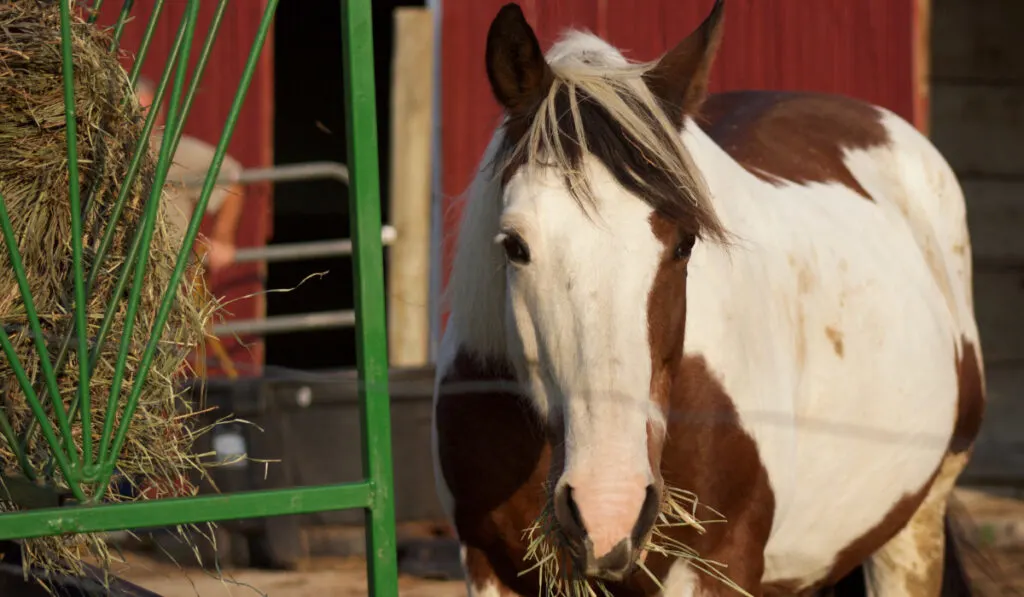
Table of Contents
What Is a Paint Horse?
A paint horse is a North American horse breed officially recognized as the American Paint Horse. Physically, it might share some characteristics with other horse breeds such as the American Quarter Horse, but there is a major difference when it comes to the colors of the American Paint horse.
American Quarter horses have fewer white markings on their coats compared to the American Paint horse. To clearly distinguish the two from each other and promote the welfare of the American Paint horse, the American Paint Horse Association (APHA) was formed.
Why Do Different Paint Horse Colors and Patterns Exist?
The different variations in horse coat coloration all come down to the horse’s genetics.
A horse’s coat color is defined by the set of color chromosomes received from both parent horses. The genes they inherit determine not just their color, but also many more body features and characteristics.
Many times, the coats are described as colored, which implies that the horse might be double-colored or more. For Paint horses, it is always a solid or darker color with white spots or patches. However, Paint horses do not need to have white patches to be paint horses. Paint horses can be of pure solid colors.
The color genes inherited from the parents always have either red or black color genes, and either of these will form the base color of the horse’s coat.
However, horses might also inherit other color genes such as the dominant white gene called sabino-1, which is greatly responsible for the formation of white patches and whitening of other horse breeds.
They can also inherit other color genes like the cream dilution gene that is responsible for the lightening of the coat color. Therefore, for a horse’s coat color pattern to be formed, it takes the combination and blending of all these color genes to give the final color.
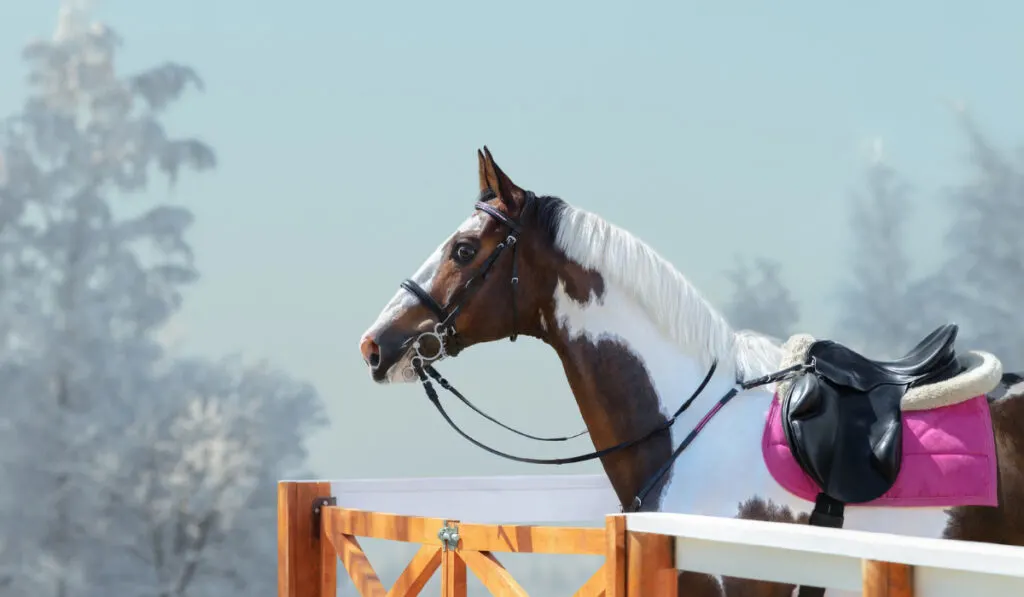
Paint Horse Color Coats
1. Tobiano
Also known as “Toby,” the tobiano is a Paint horse with a solid-colored head and white coats over their backs and on the legs, often below their hocks and knees on multiple legs if not all the legs. Other tobianos will have solid-colored heads with either a white strip, star, blaze, or snip.
Regardless, every toby horse pattern has unique patterns as evidenced by the well-defined boundaries and color articulation of their multicolored tails and manes. However, most tobianos have dark eyes.
Therefore, tobiano color patterns often constitute mainly solid body colors with the bright white color occasionally appearing on the heads, backs, or feet. This color pattern is often prevalent in most pony and draft horse breeds.
The tobiano gene has a color pattern mainly manifested by the dominant gene “TO”. Therefore, for a horse to be of the tobiano coat color, it has to have the genotype “Toto” which shows the presence of one dominant and one recessive tobiano gene respectively.
2. Overo
Unlike tobianos who have clearly defined white patterns on the body, the overo horses often have scattered white marking on their legs, heads, and underbellies, making them look like they had a good play in a low pool of white paint enough to splash on their underbellies and their heads.
However, the white marking found on their undersides and heads rarely crosses to their backs. Overos can also be apron-faced, bald-faced, or bonnet-faced, and either one or both eyes will often be blue.
The color-line borders are often scattered and irregular but often look bordered, meaning that the borderlines are often made of mixed colored hairs, having both the solid color and the white color.
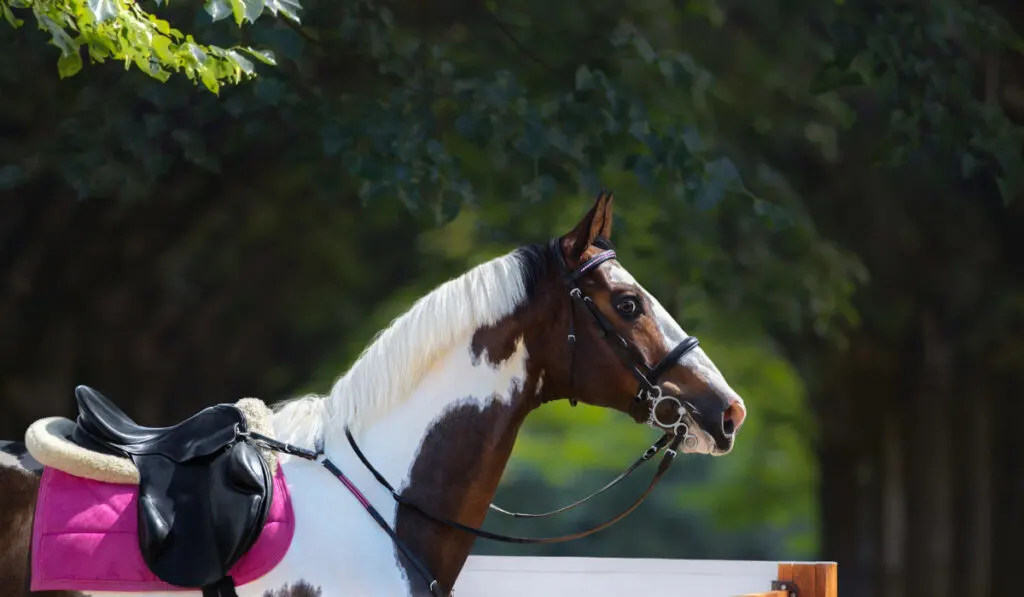
3. Splashed White Overo
Similar to overo paint horses, the splashed white overos have splashes of white markings on their underbellies, legs, heads, and even the blue eyes, the reason why they are considered overos.
However, the main difference between the splashed white and the overos is in the level of the white spots. Most overo horses have solid colored backs, but for the splashed whites, the white color will often reach the horse’s topline.
Their coat color demarcations are always crisp and clear, often with little to no roaning. The splashed white overo is rare and, interestingly, they have high chances of deafness.
4. Frame Overo
Since it is an overo, the frame overos are characterized by their blue eyes and the extensive white markings and patches on the head.
Unlike the other overos, the frame overo has large white patches on its underbelly that are crisply and delicately detached from the colored sections. These white patches do not also cross the horse’s body topline and they have characteristically dark or solid-colored legs with white feet.
The frame overo paint horses are often found in packs with Spanish ancestry. However, they are most associated with the “lethal white syndrome” that causes the formation of homozygous genes.
5. Tovero
Tovero is a color pattern that is a blend of both the tobiano and the overo coat color patterns.
For instance, a tovero might have a solid body coloring like the tobiano, but with an apron or a bald face. They might also have blue eyes like the overos, but have a wide display of white in the face and chest areas, more like the tobianos.
Therefore, it is safe to say that toveros are usually crossbreeds between the tobianos and overos, and the offspring often inherits characteristics from both parents, making it quite a difficult task to tell them apart, hence the coining of a hybrid name for the hybrid offspring, Tovero.
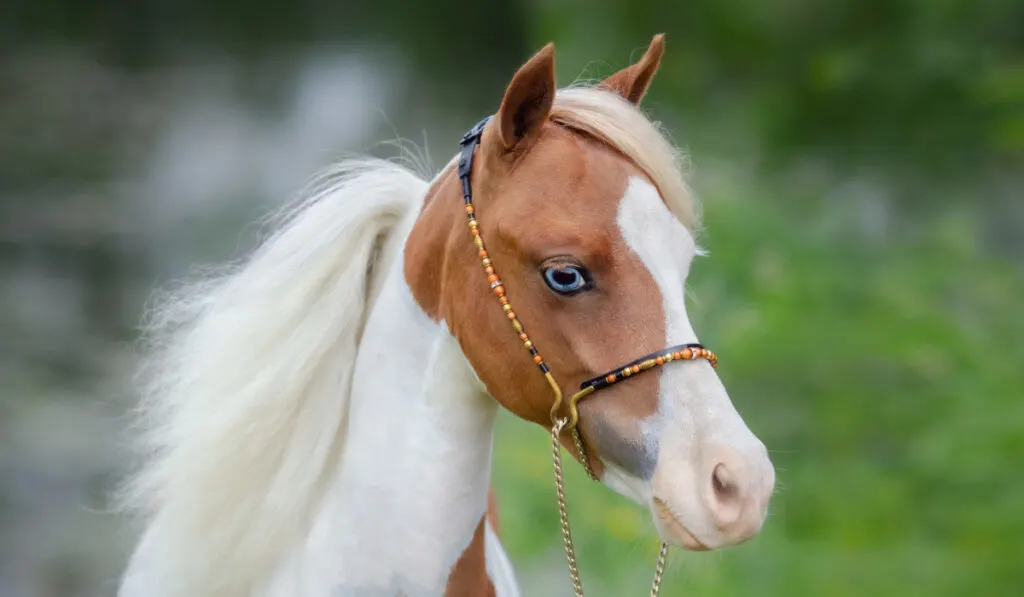
6. Sabino
Horses with sabino paint patterns often have a unique white pattern, usually consisting of white flecks and specks on their flanks, and many have entirely white legs. Some sabino whites might have so much white color that other darker colors will only manifest on their ears, chest, muzzles, or the dock of the tail.
The base coat color of the sabino paint-colored horse is not solid, but rather mixed with white hairs, and might give an impression of a roan look, but it isn’t. However, some might have roanish coats that stretch from the belly up to the sides.
Sabinos, which is Spanish for ”pale,” are characterized by their white blazes that can be so extensive that the sabinos can even resemble roan horses with their white coats. These characteristics are common for most horses like Clydesdales, Quarter horses, and Thoroughbreds.
However, true sabinos are created by the specific genotype Sabino 1 (SB1), meaning that a horse might have the sabino characteristics but might not be a true sabino.
7. Medicine Hat
A medicine hat paint color is a unique horse color pattern that entails a predominantly white coat with a colored dark patch of hair atop the head covering the ears and head. They also often have a dark shield pattern across their chest. All of them typically have blue eyes and pink muzzles.
Ancient Americans believed these unique markings to be a sign of special spiritual protection, the reason why the medicine hats were a favorite for battlefields.
Although they are very rare to come by, medicine hats are believed to be hybrids of frame overos with tobianos, sabinos with tobianos, and frame overos with sabinos.
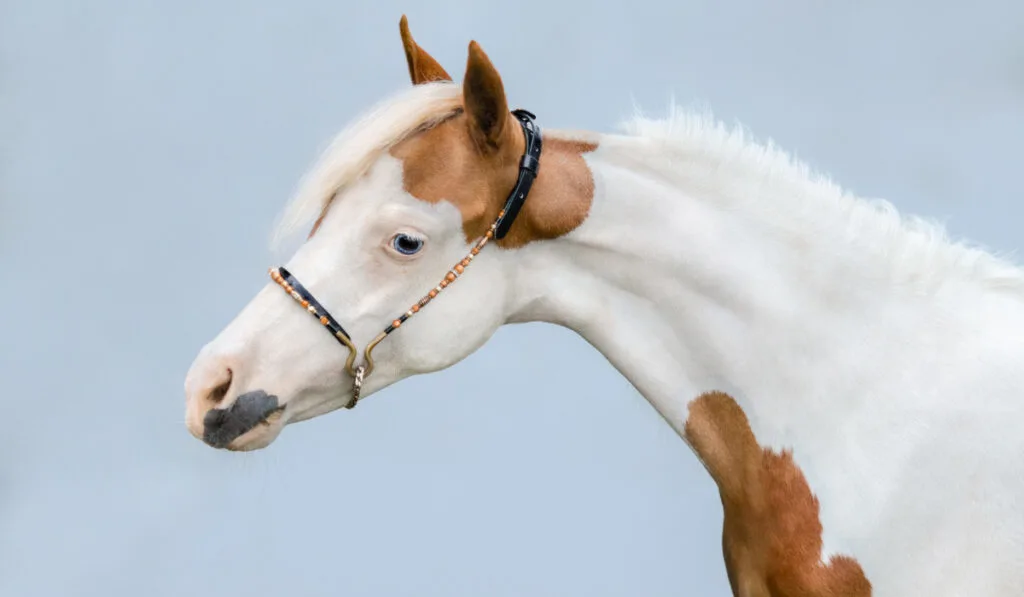
What Qualifies as an American Paint Horse?
The American Paint Horse Association has put in place strict guidelines as the baseline to register a horse as an American Paint horse.
First, the foal’s horse parents need to be officially registered with either the American Paint Horse Association, American Quarter Horse Association, or the Jockey Club.
Secondly, the horse needs to have some paint characteristics such as blue eyes, white leg markings, bi-colored manes with white, or even a bald face.
Lastly, a genetic paint test must be conducted for confirmation.
Conclusion
Paint horse colors might look similar but every paint horse has unique coat colors and markings, and are in no way similar to another horse’s, even by small margins.
Therefore APHA horse colors are unique to the specific horses that are acknowledged by the regulatory association.
Resources
- https://artradarjournal.com/2022/02/21/what-are-the-main-colors-for-a-paint-horse/
- https://www.besthorserider.com/paint-horse-colors-and-patterns/
- https://horseracingsense.com/paint-horse-colors-plus-6-fun-facts-and-pictures/
- https://www.equisearch.com/articles/color-patterns-paint-horses
- http://afs.okstate.edu/breeds/horses/paint/index.html/
- https://en.wikipedia.org/wiki/American_Paint_Horse

